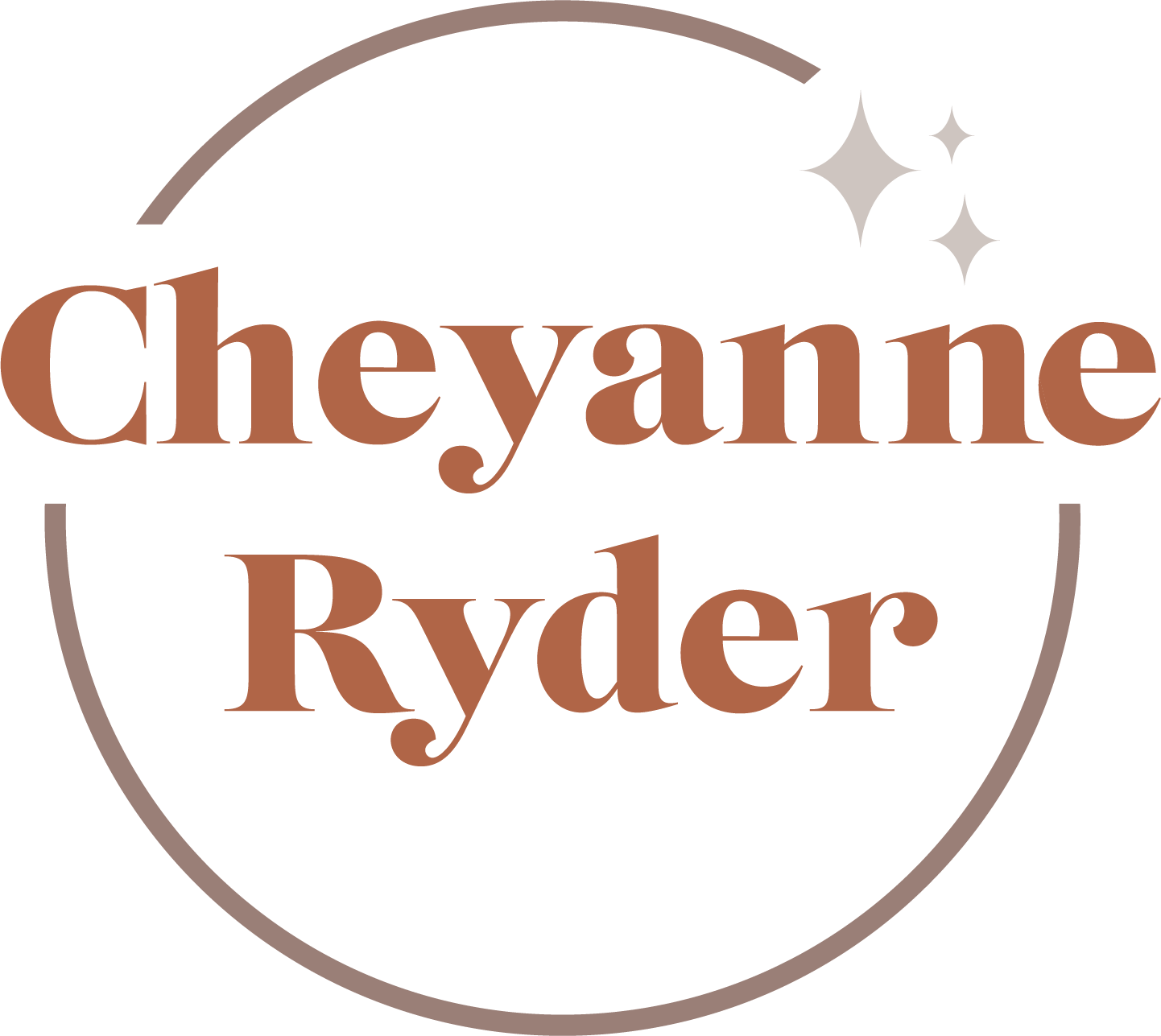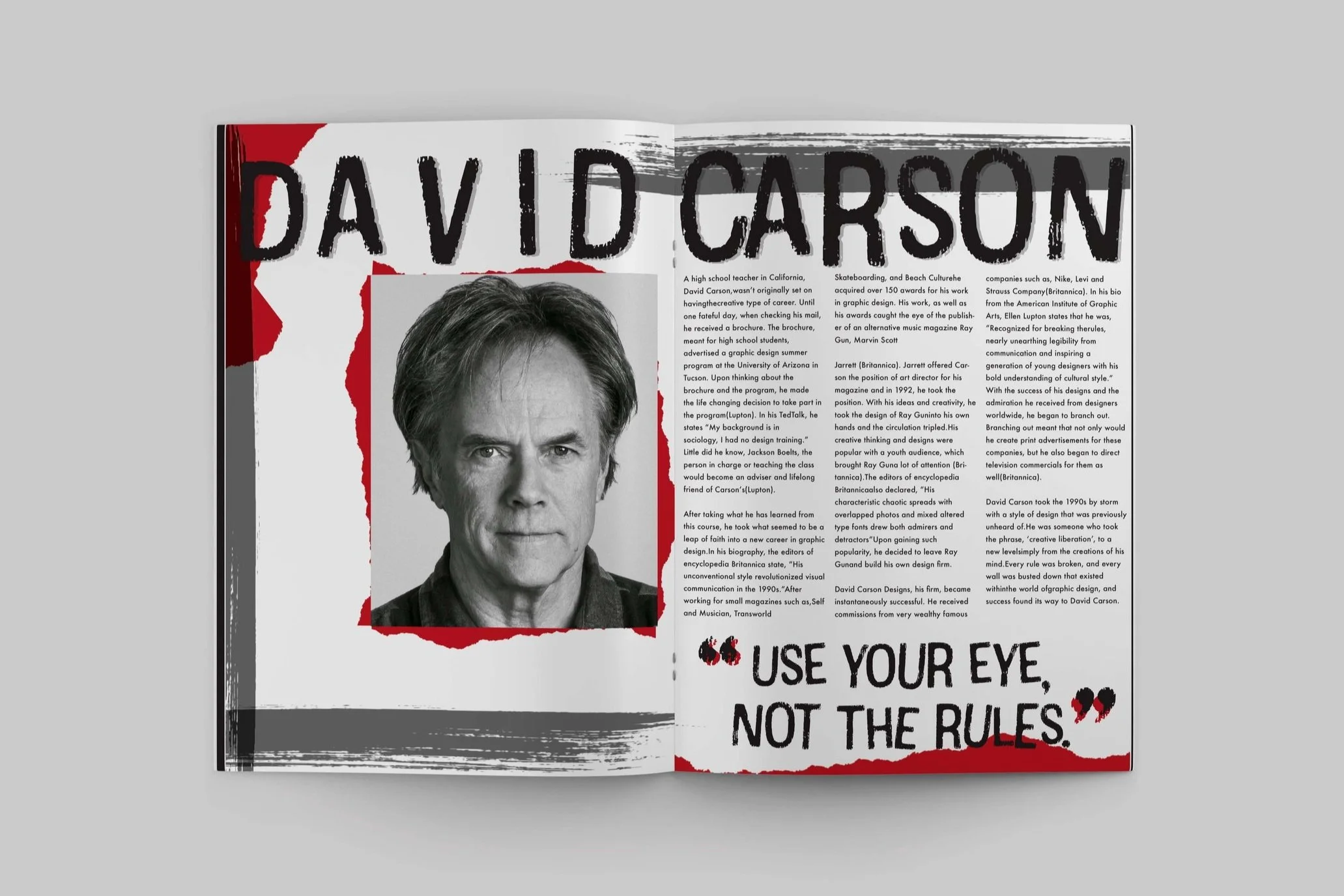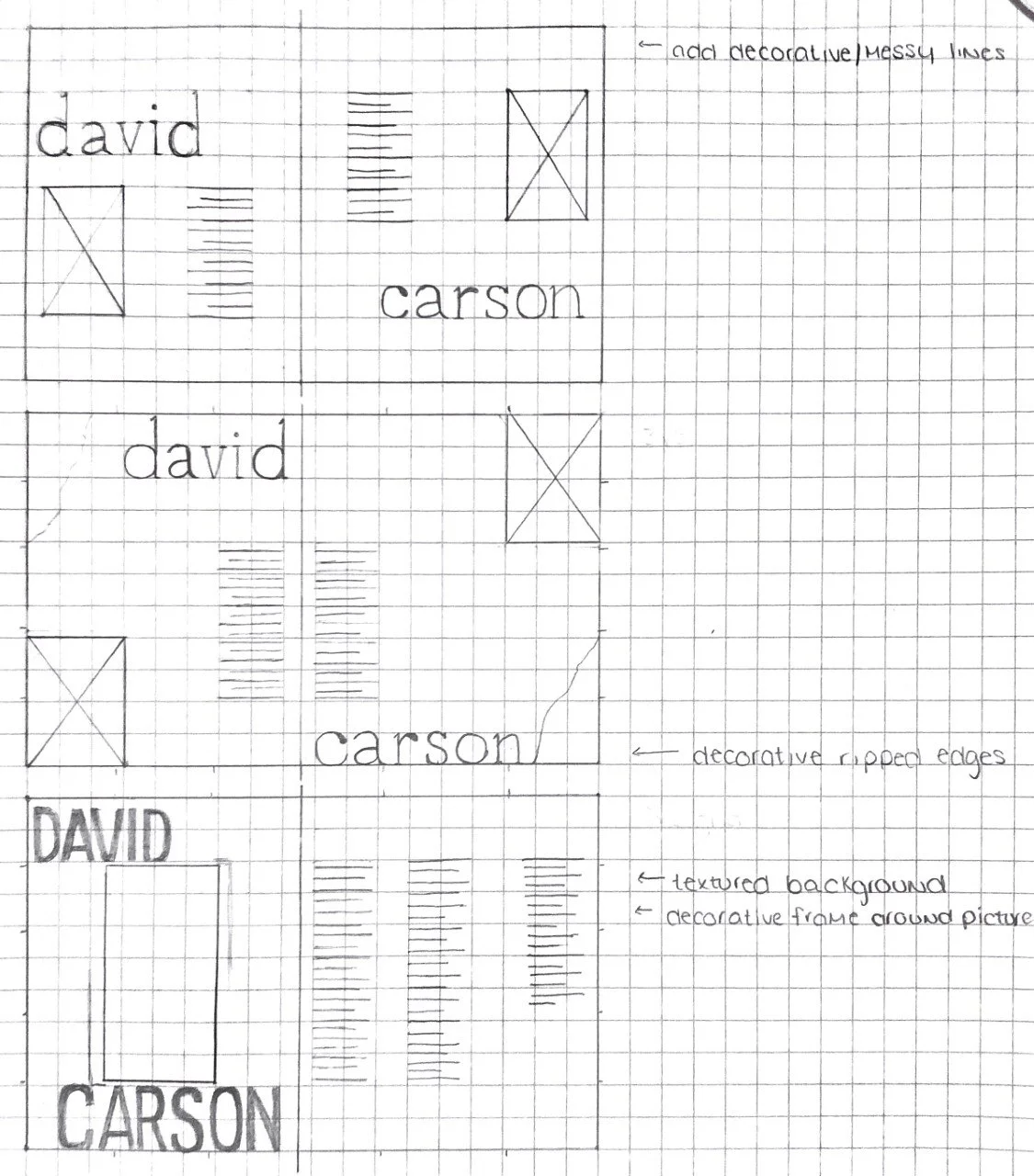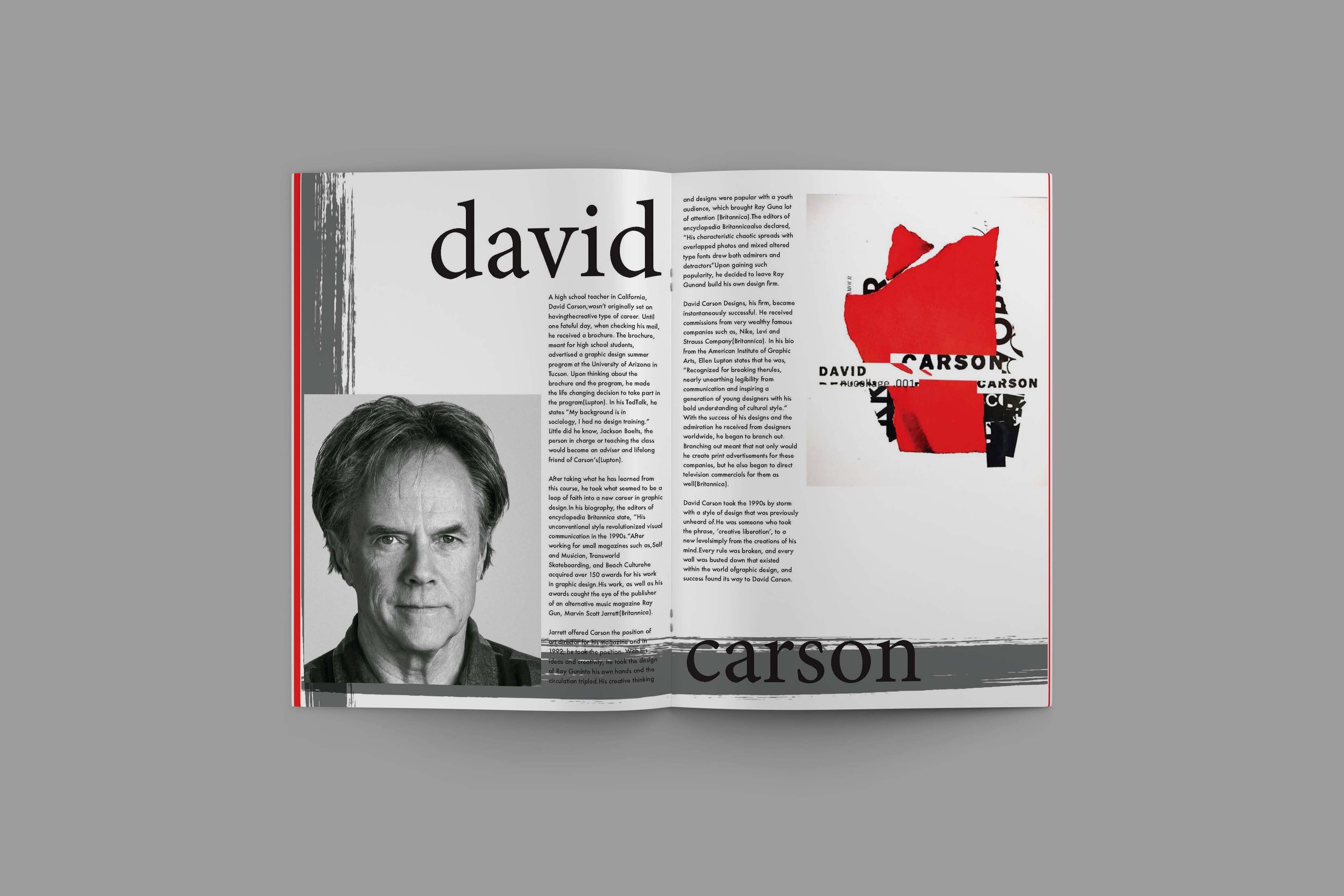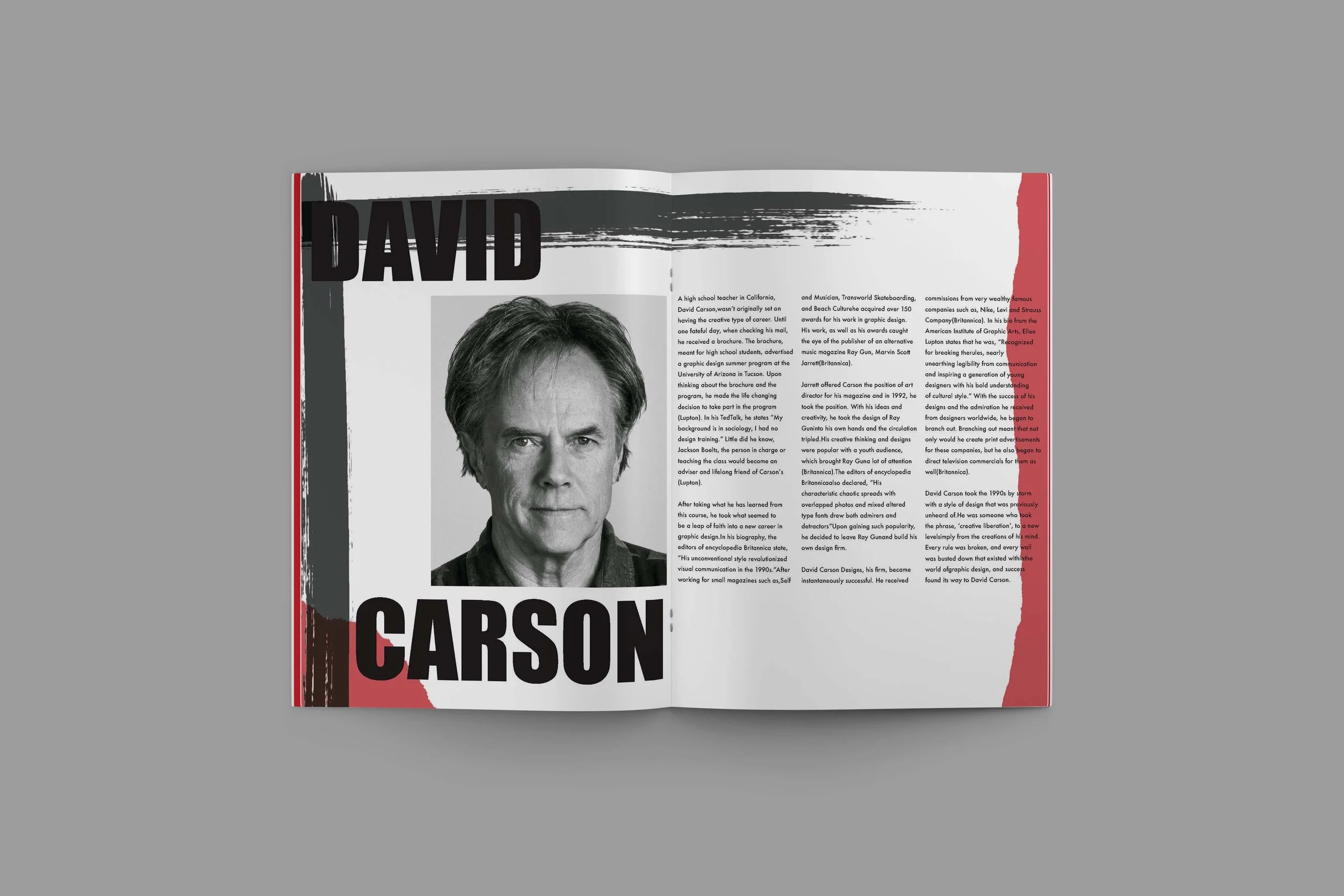David Carson Spotlight Print
February 2020
Proposal
For this project, I was tasked with researching the graphic designer, David Carson. After researching, I wrote a spotlight piece that outlined his life and experience with design.
Spotlight Piece
A high school teacher in California, David Carson, wasn’t originally set on having a creative type of career. Until one fateful day, when checking his mail, he received a brochure. The brochure, meant for high school students, advertised a graphic design summer program at the University of Arizona in Tucson. Upon thinking about the brochure and the program, he made the life-changing decision to take part in the program (Lupton). In his TedTalk, he states “My background is in sociology, I had no design training.” Little did he know, Jackson Boelts, the person in charge of teaching the class would become an adviser and lifelong friend of Carson’s (Lupton).
After taking what he had learned from this course, he took what seemed to be a leap of faith into a new career in graphic design. In his biography, the editors of Encyclopedia Britannica state, “His unconventional style revolutionized visual communication in the 1990s.” After working for small magazines such as Self and Musician, Transworld Skateboarding, and Beach Culture he acquired over 150 awards for his work in graphic design. His work, as well as his awards, caught the eye of the publisher of an alternative music magazine Ray Gun, Marvin Scott Jarrett (Britannica).
Jarrett offered Carson the position of art director for his magazine and in 1992, he took the position. With his ideas and creativity, he took the design of Ray Gun into his own hands and the circulation tripled. His creative thinking and designs were popular with a youth audience, which brought Ray Gun a lot of attention (Britannica). The editors of Encyclopedia Britannica also declared, “His characteristic chaotic spreads with overlapped photos and mixed altered type fonts drew both admirers and detractors” Upon gaining such popularity, he decided to leave Ray Gun and build his own design firm.
David Carson Designs, his firm, became instantaneously successful. He received commissions from very wealthy famous companies such as Nike, Levi and Strauss Company (Britannica). In his bio from the American Institute of Graphic Arts, Ellen Lupton states that he was, “Recognized for breaking the rules, nearly unearthing legibility from communication and inspiring a generation of young designers with his bold understanding of cultural style.” With the success of his designs and the admiration he received from designers worldwide, he began to branch out. Branching out meant that not only would he create print advertisements for these companies, but he also began to direct television commercials for them as well (Britannica).
David Carson took the 1990s by storm with a style of design that was previously unheard of. He was someone who took the phrase, ‘creative liberation’, to a new level simply from the creations of his mind. Every rule was broken, and every wall was busted down that existed within the world of graphic design, and success found its way to David Carson.
Sketches
Just as I start most other projects, I once again broke out my sketchbook to get my ideas out of my head and onto paper. I started with three basic layouts on grid paper to ensure that in my design I stuck to the grid that I developed for the spread. After sketching for a while I turned to the Adobe Suite to begin the high-fidelity design process.
Compositions
Just as I sketched out multiple layouts, I designed a few different compositions to generate a more high-fidelity flow of ideas. Though my compositions are fairly similar in color palette and style, they all highlight the use of different layouts and some different elements. Because David Carson is all about breaking the unwritten rules of design, I decided that a spread that highlights him needed a bit of edge. I used different ripped paper samples as well as paint strokes to almost mimic the feeling that his designs give.
After creating each composition, I presented them to my peers to get feedback and critiques. For this project, the feedback was in favor of my first design.
Final Design
After some refinement of my composition based on feedback, I finalized my design.
After going through the critiquing process, my peers ultimately decided that this composition was the strongest of the three. I had a lot of fun making this design and ‘breaking the rules’ in different ways. I think the quote that I highlighted in the spread highlights all that David Carson stands for, as does the final design!
